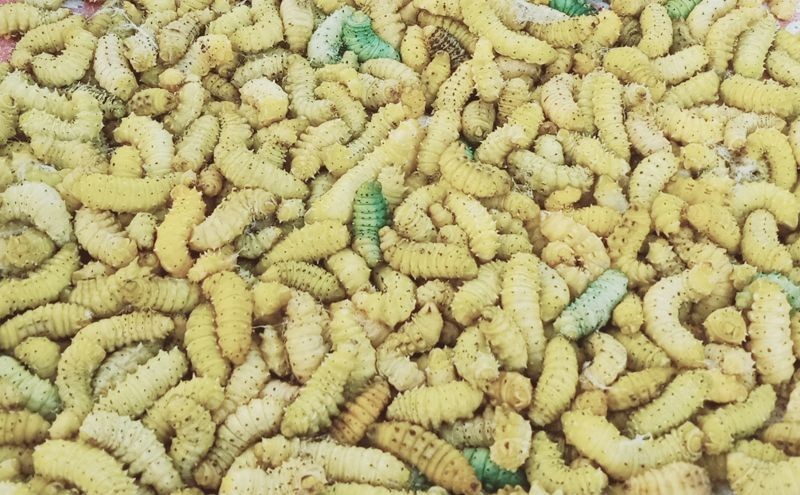The Department of Sericulture’s production statistics for the financial year 2023-24, showcases substantial progress across silk varieties.

Morung Express News
Dimapur | January 12
The sericulture sector has marked a year of significant achievements in 2023-24, with progress reported across Muga, Eri, Oak Tasar, and Mulberry silk varieties. According to the data from the Department of Sericulture contained in the Nagaland Statistical Handbook 2024 released by the Directorate of Economics and Statistics, advancements in cultivation, cocoon production, and raw silk output have reinforced the sector's importance in rural livelihoods and economic growth. The comprehensive statistics showcase a blend of traditional practices and modern production methods driving the industry forward.
Muga silk, celebrated for its golden luster, demonstrated consistent production trends during the year. A total of 2,151 acres were dedicated to its cultivation, underlining its prominence in traditional sericulture practices. Efforts to maintain healthy silkworm stock were reflected in the production of 0.315 lakh disease-free layings (DFLS). Additionally, the production of reelable cocoons reached 10.39 lakh, ensuring a steady supply of raw material for silk reeling. The year’s raw silk output from Muga silk stood at 0.24 metric tonnes, aligning with expectations for this heritage variety.
Eri silk emerged as the most widely cultivated variety in 2023-24, making substantial contributions to rural employment and sericulture. Spanning an impressive 15,280 acres, Eri silk accounted for the largest area under cultivation among the four varieties. The production of DFLS was remarkable, with 59.92 lakh units produced, ensuring robust support for silkworm farming. The output of empty cocoons totaled 446.44 metric tonnes, while spun silk production reached 379.92 metric tonnes, reflecting Eri silk’s popularity in the textile industry. Furthermore, Eri pupae production stood at 1,710 metric tonnes, a valuable by-product that holds potential for uses such as fish feed and other industries.
Oak Tasar silk production remained a specialized segment of the sericulture industry, contributing to biodiversity and sustainability. With just 315 acres under cultivation, Oak Tasar plays a niche role in the sector. The production of DFLS was recorded at 0.10 lakh, reflecting its limited but focused efforts. Reelable cocoon production reached 3.33 lakh, showcasing the potential of this variety for high-quality silk output. However, its raw silk yield was modest, totaling 0.081 metric tonnes for the year, indicative of its limited but valuable contribution.
Mulberry silk, the cornerstone of the commercial silk industry, demonstrated consistent performance during the year. Covering 835 acres, it provided a steady cultivation base for silk production. The production of DFLS was recorded at 0.88 lakh, supporting healthy silkworm propagation. Reelable cocoon production reached 39.25 metric tonnes, reinforcing Mulberry silk’s dominance in commercial silk output. Its raw silk output was the highest among the four varieties, totaling 4.31 metric tonnes, further solidifying its role in the commercial silk industry.The data highlights the extensive efforts of sericulture farmers, researchers, and policymakers in enhancing silk production across various categories. Eri silk, with its vast cultivation area and significant contributions to spun silk and pupae production, remains a dominant force in rural employment generation. Meanwhile, Muga silk continues to uphold its cultural and traditional significance, despite its lower production volumes compared to other varieties. Oak Tasar, although niche, demonstrates promising growth potential, particularly in regions with suitable climatic conditions for its cultivation. Mulberry silk’s consistent performance solidifies its role as a staple in the commercial silk industry, driving both domestic and export markets.
The report also points to areas for improvement and opportunities for growth. Increasing raw silk yield in Muga and Oak Tasar through improved technologies and practices could enhance their contributions to the industry. Expanding the cultivation of Mulberry silk and diversifying its product base may further boost the sector's commercial viability. With these achievements and challenges, the sericulture sector continues to play a pivotal role in rural development, biodiversity conservation, and economic upliftment.





